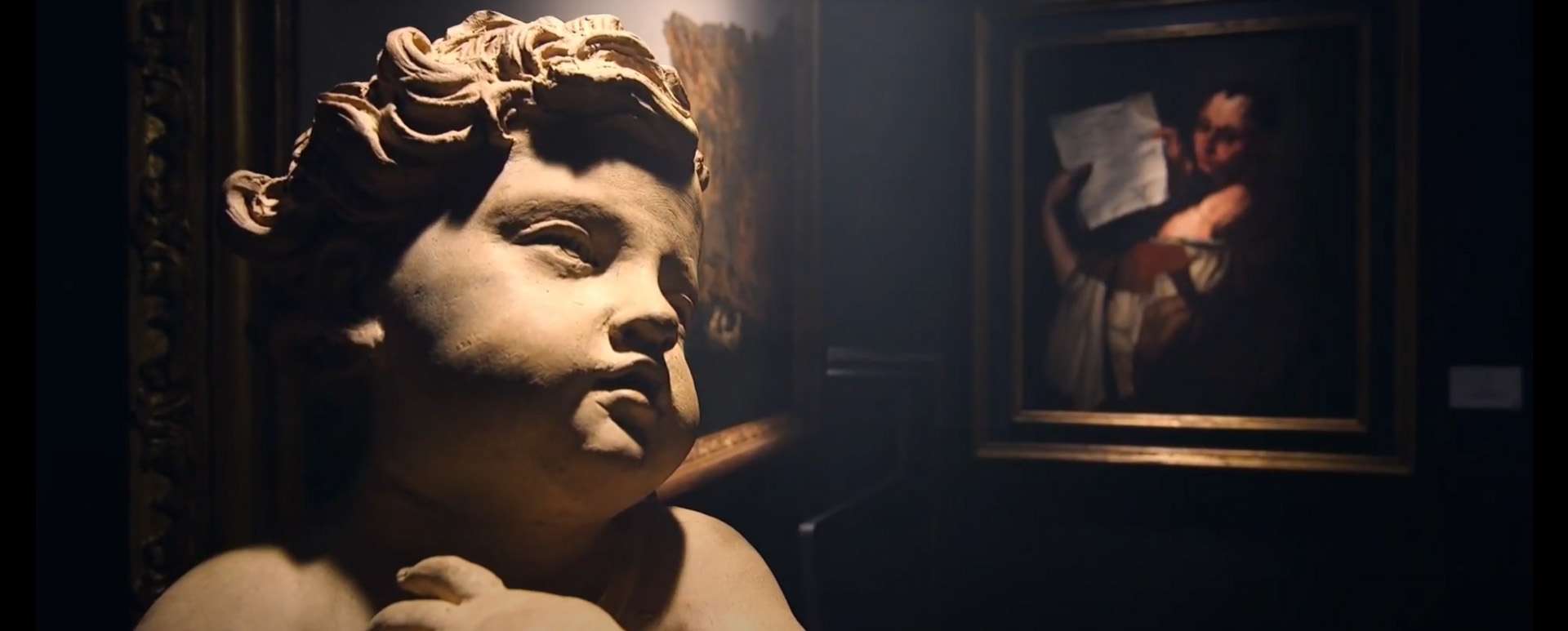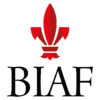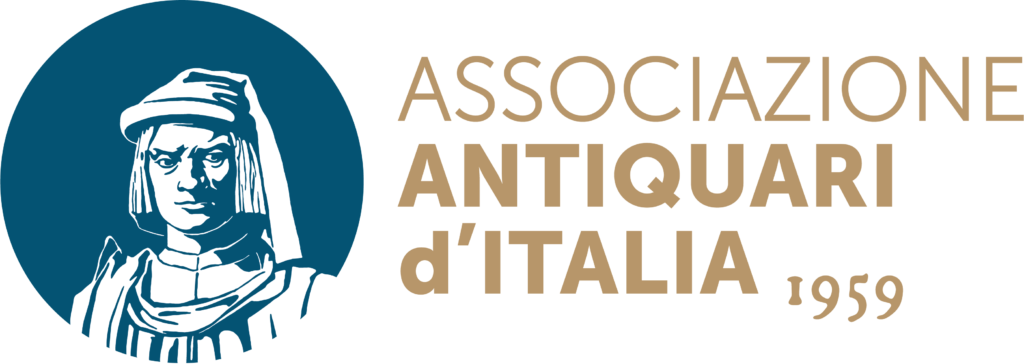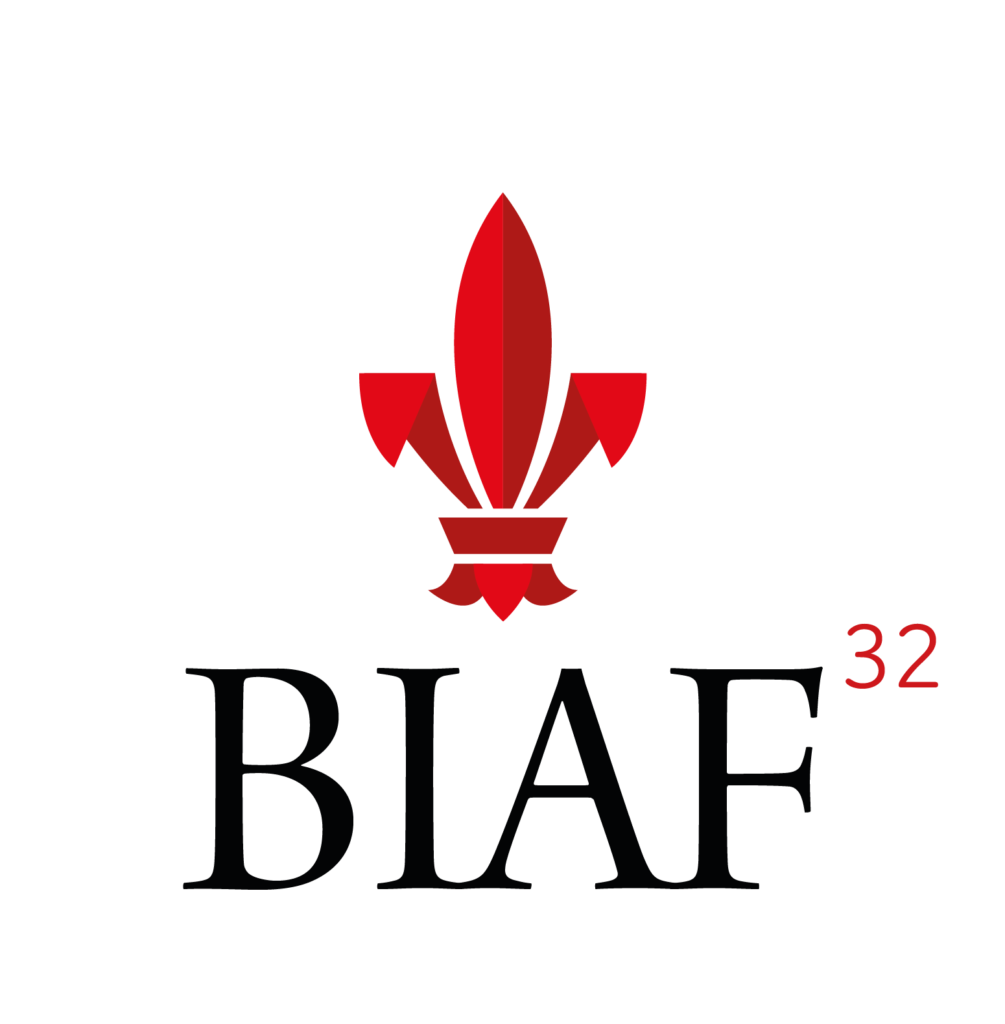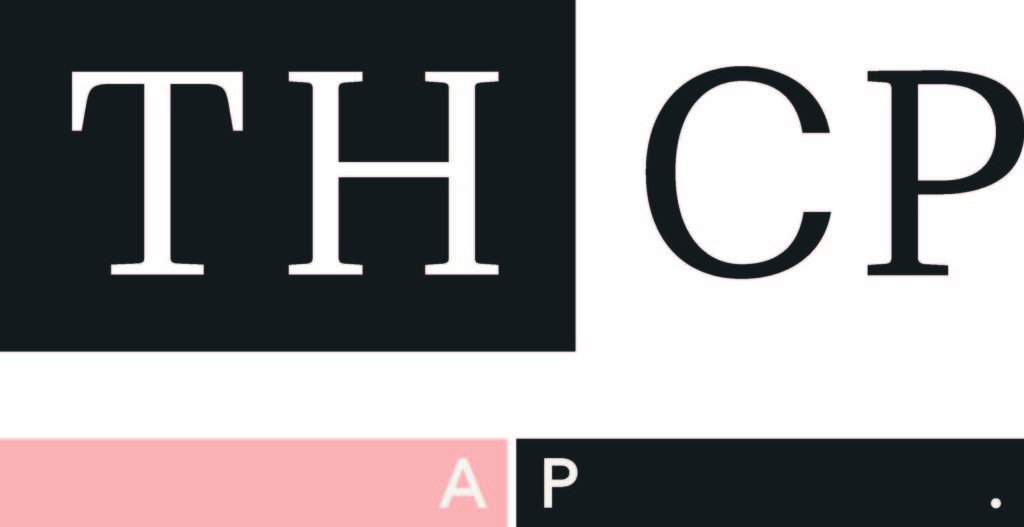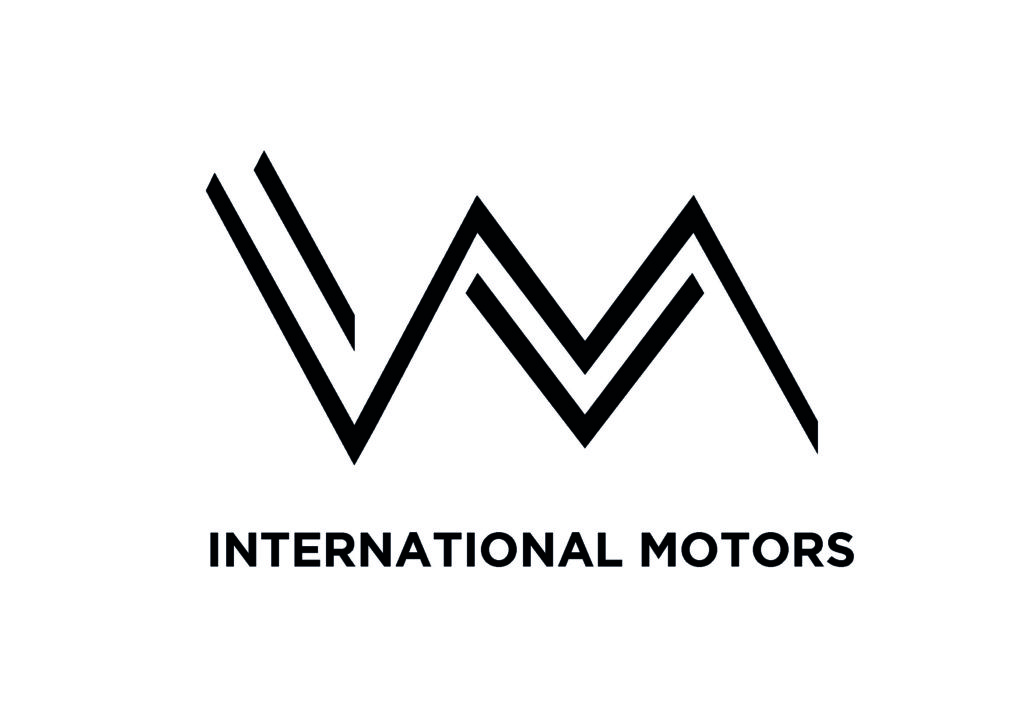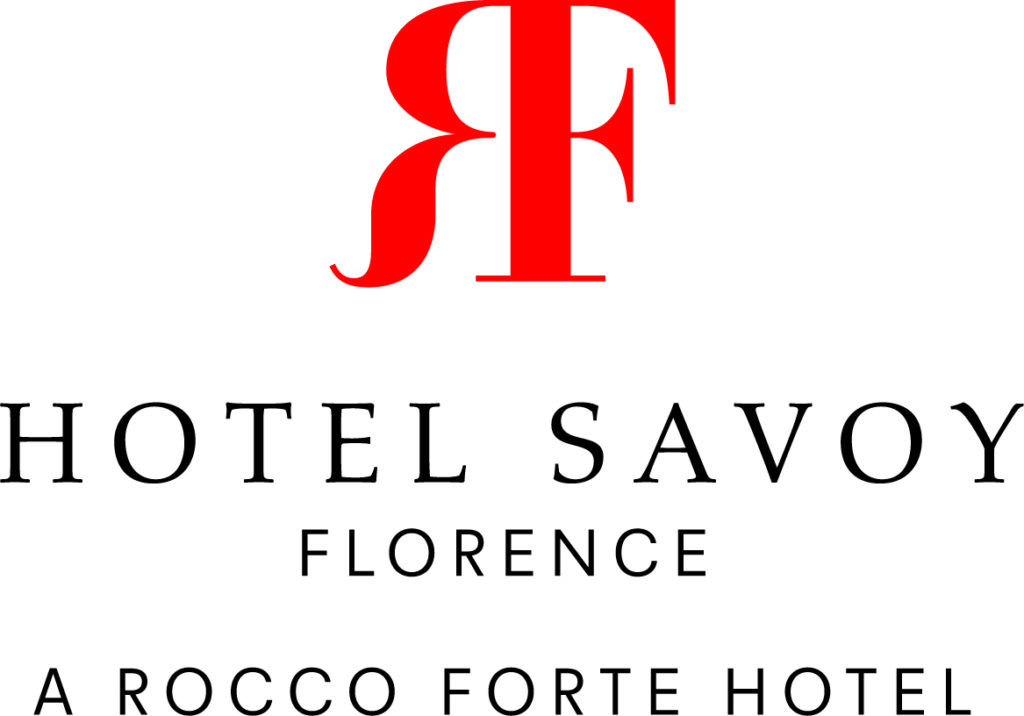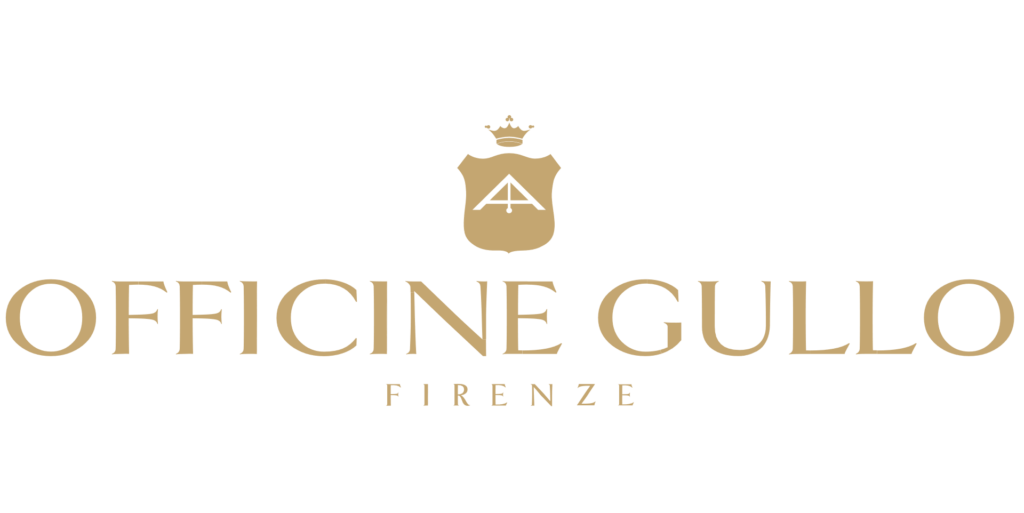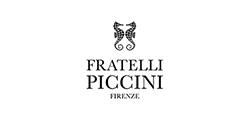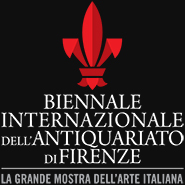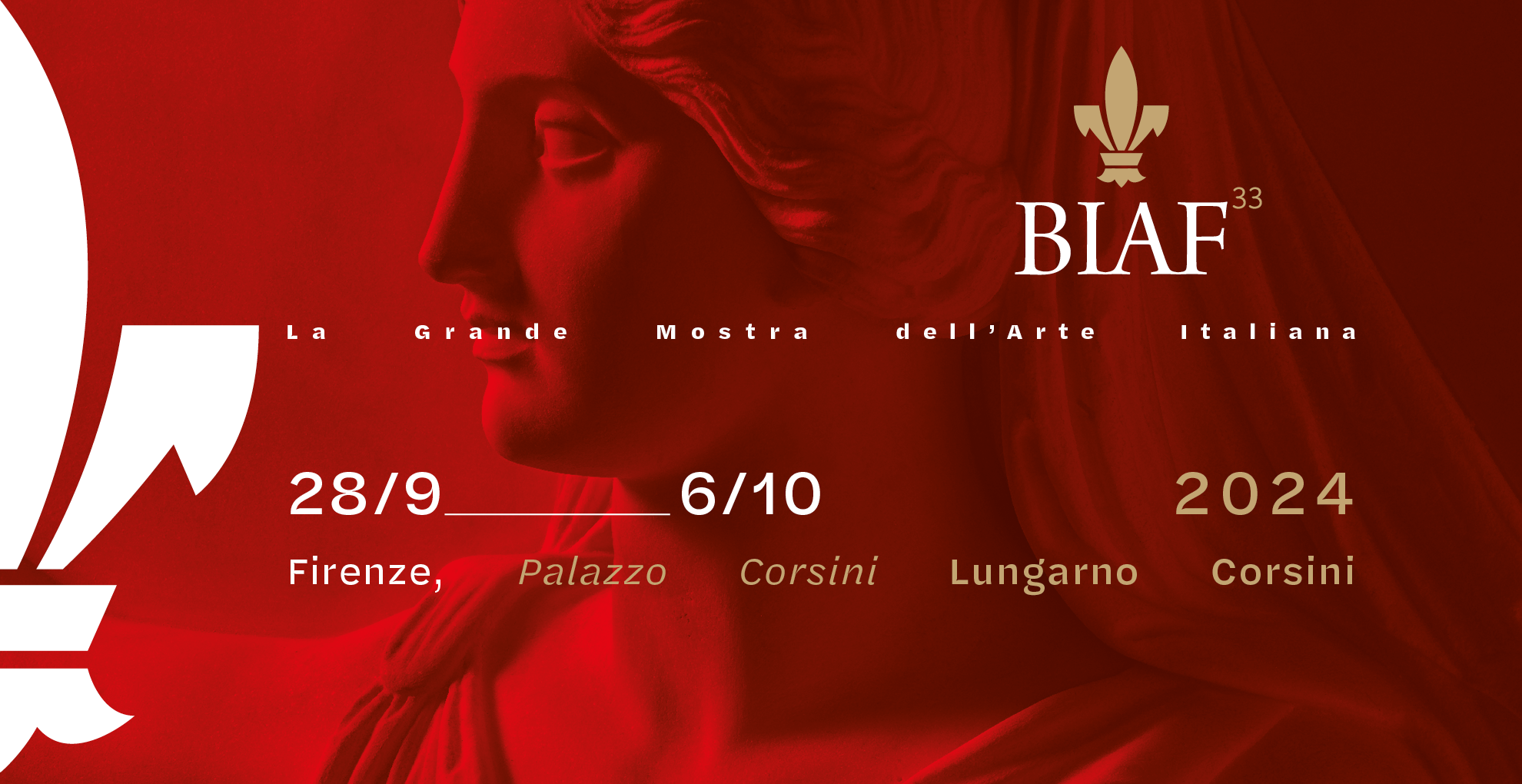

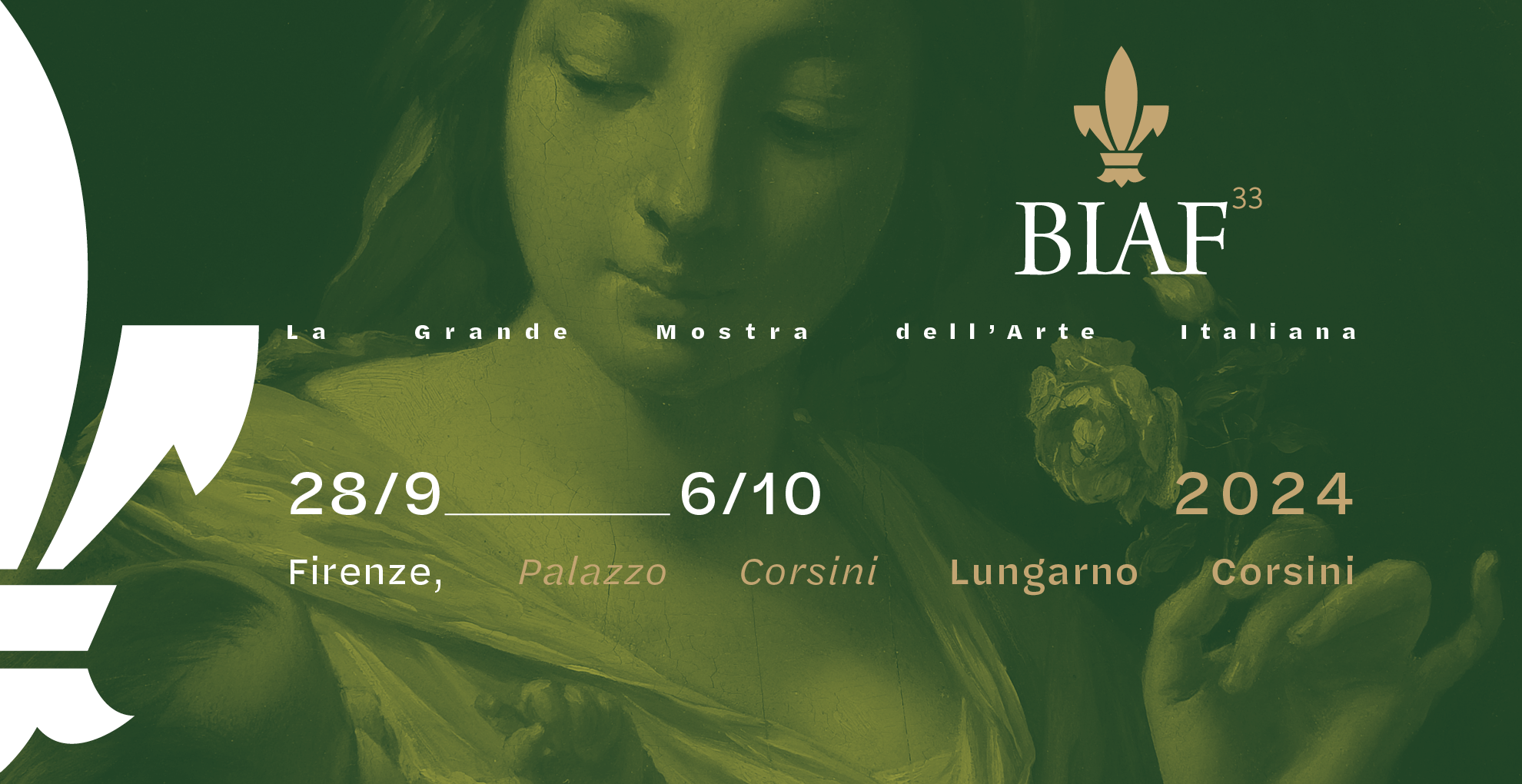

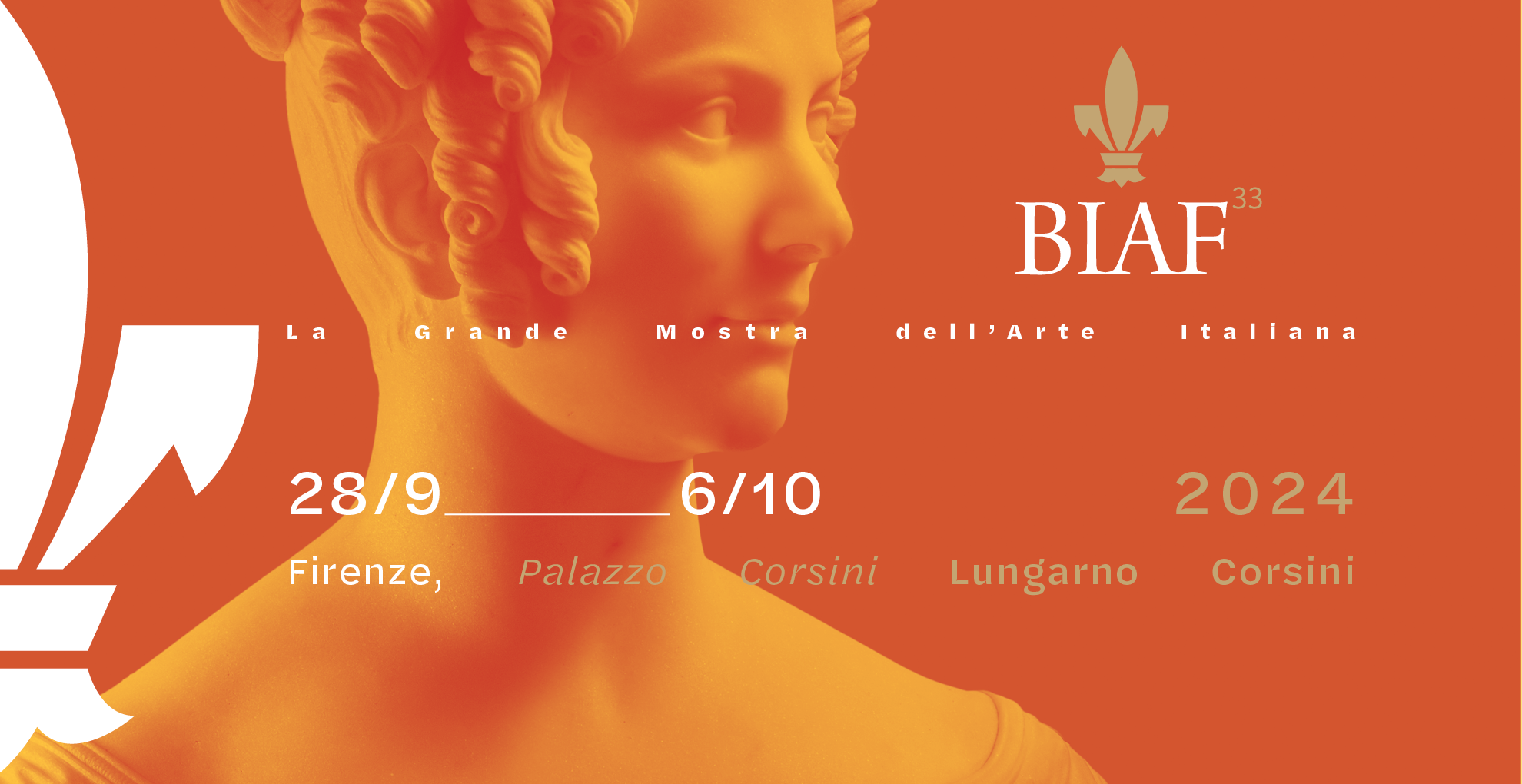

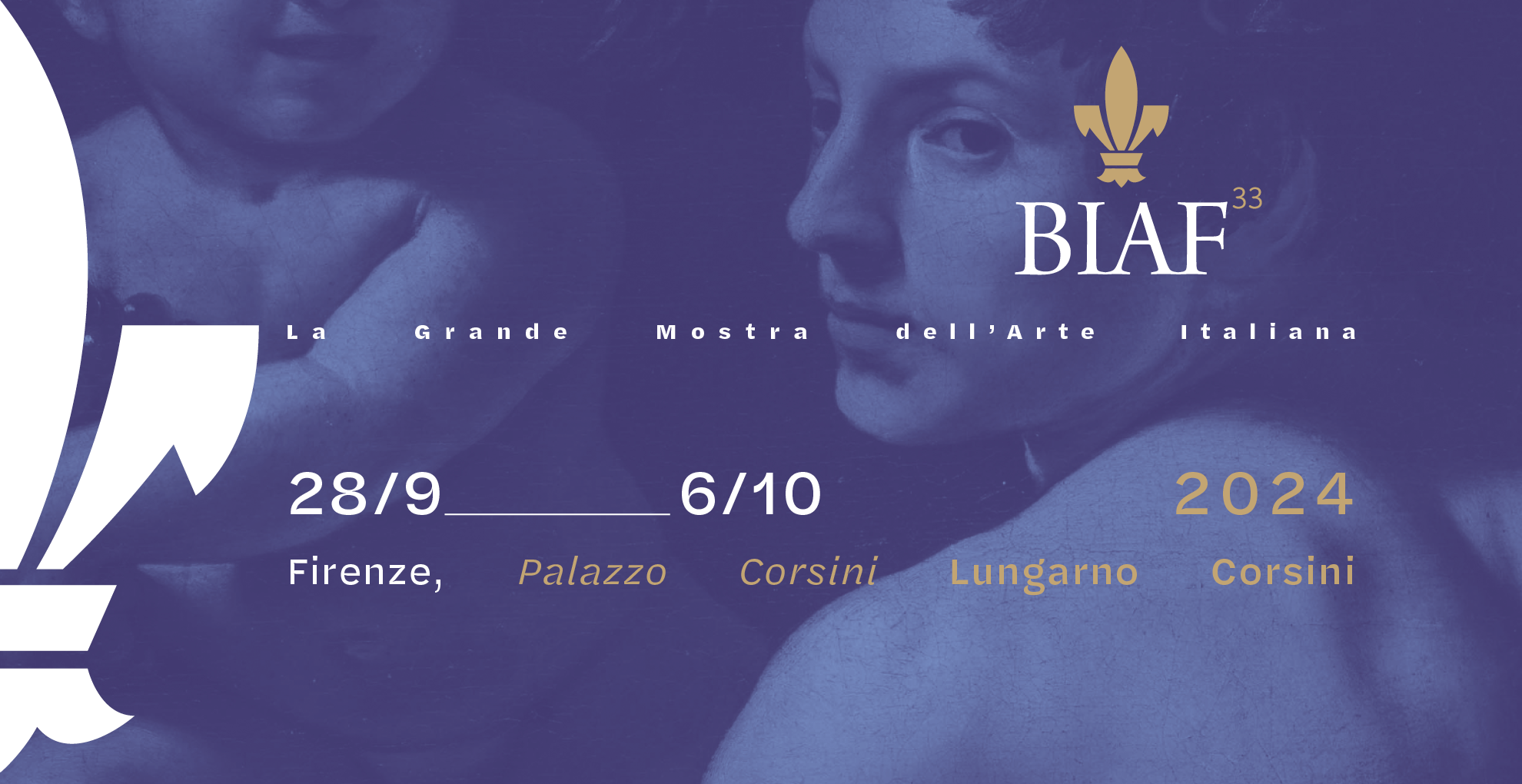

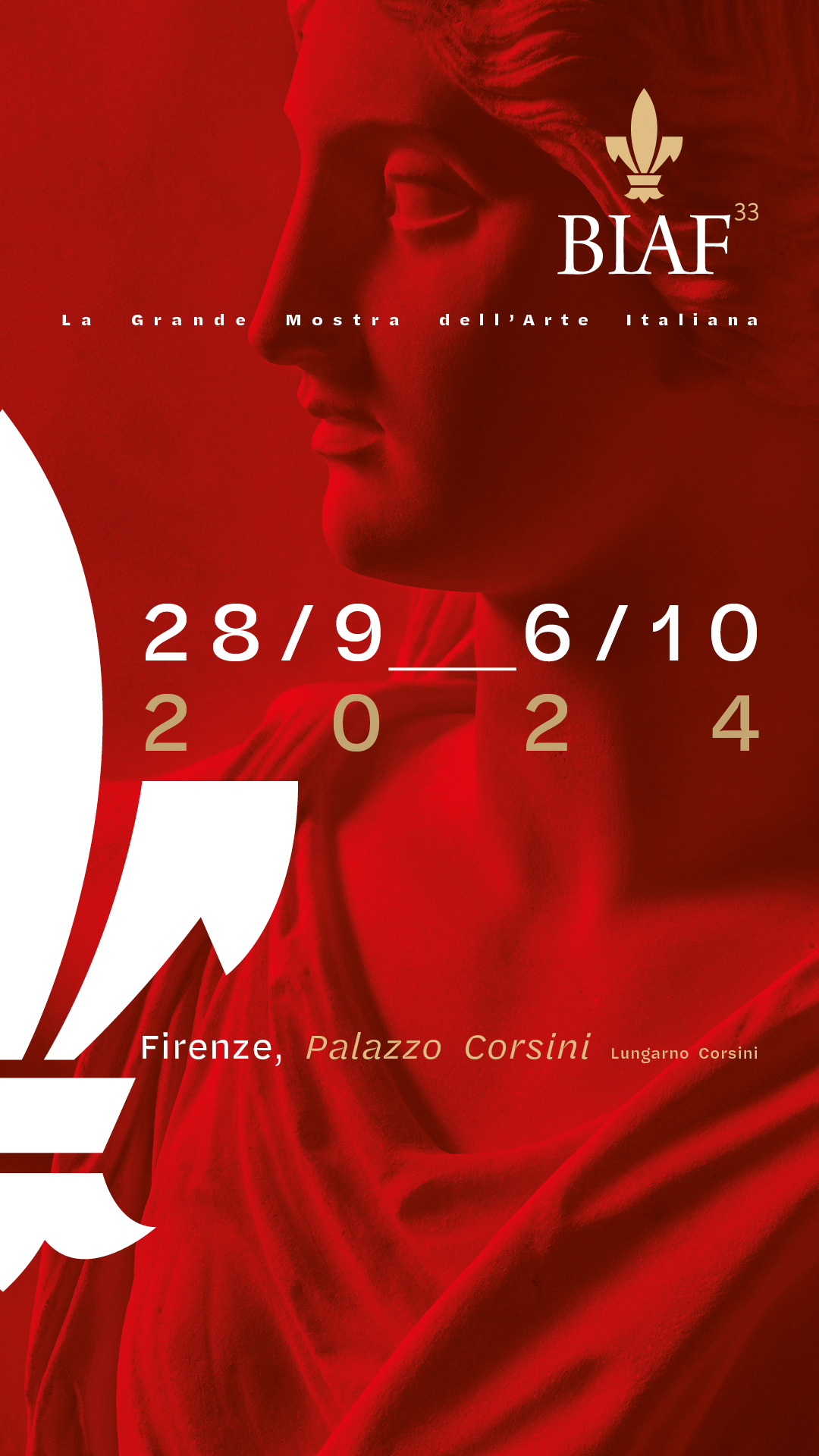

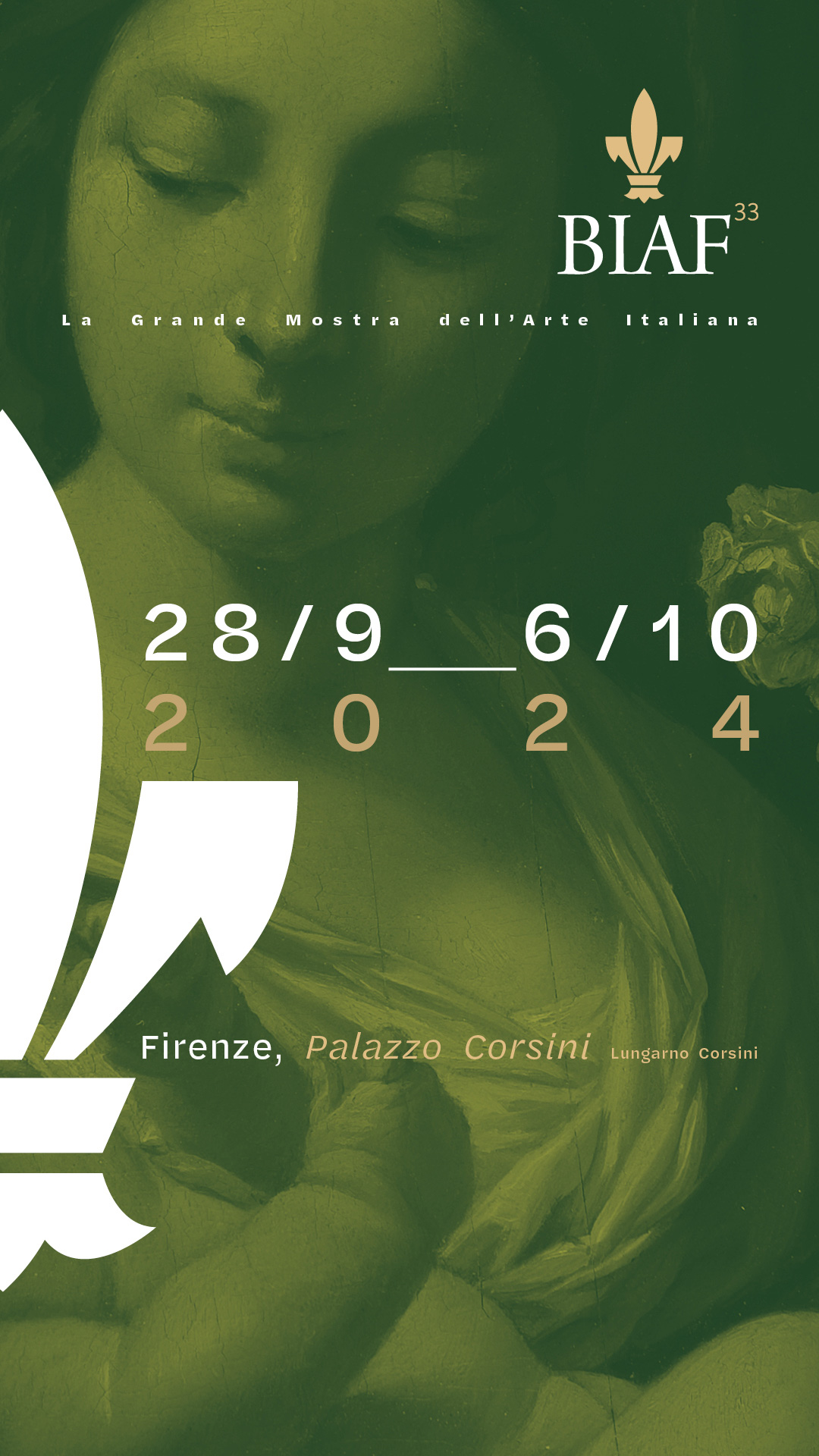

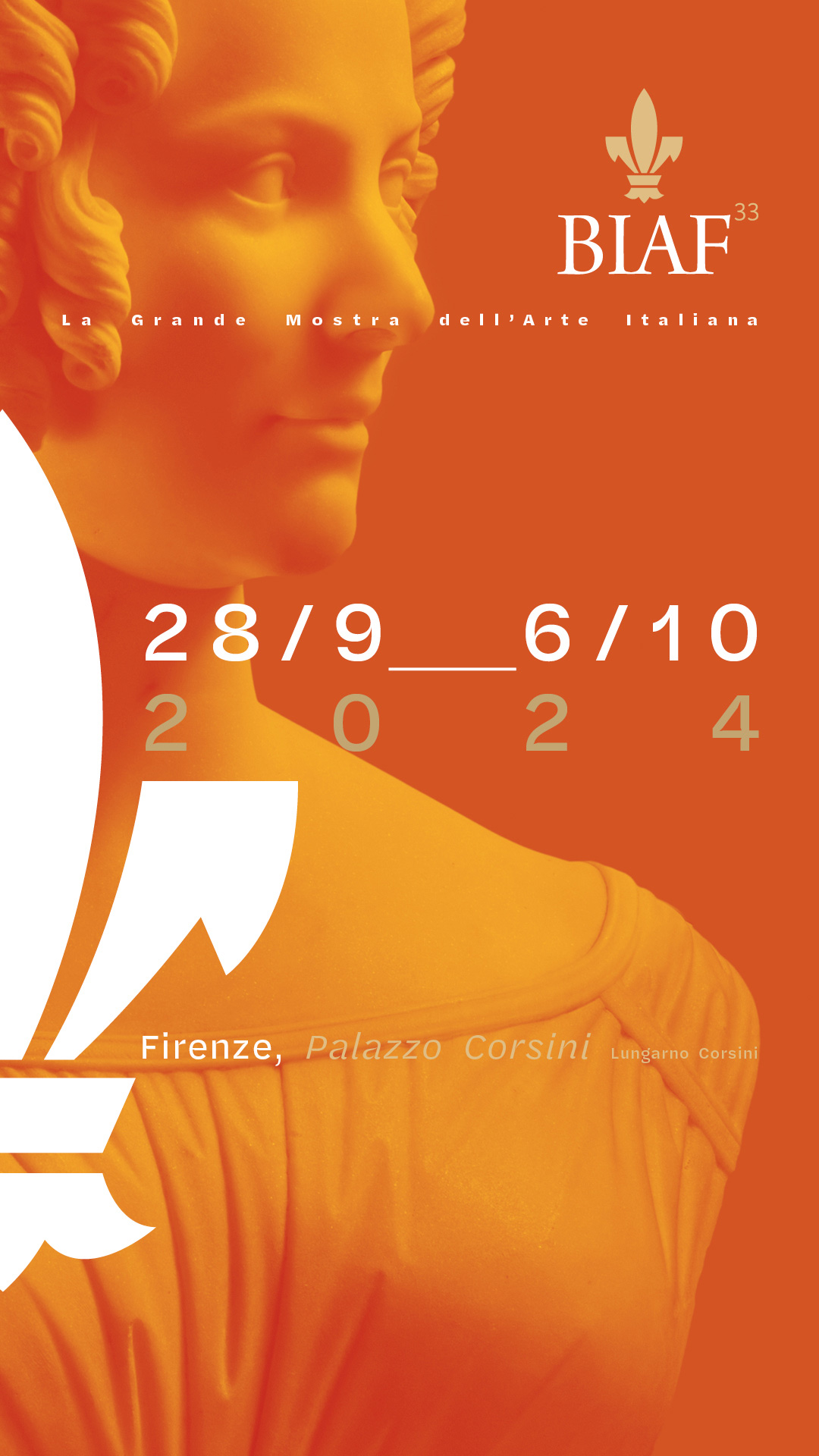

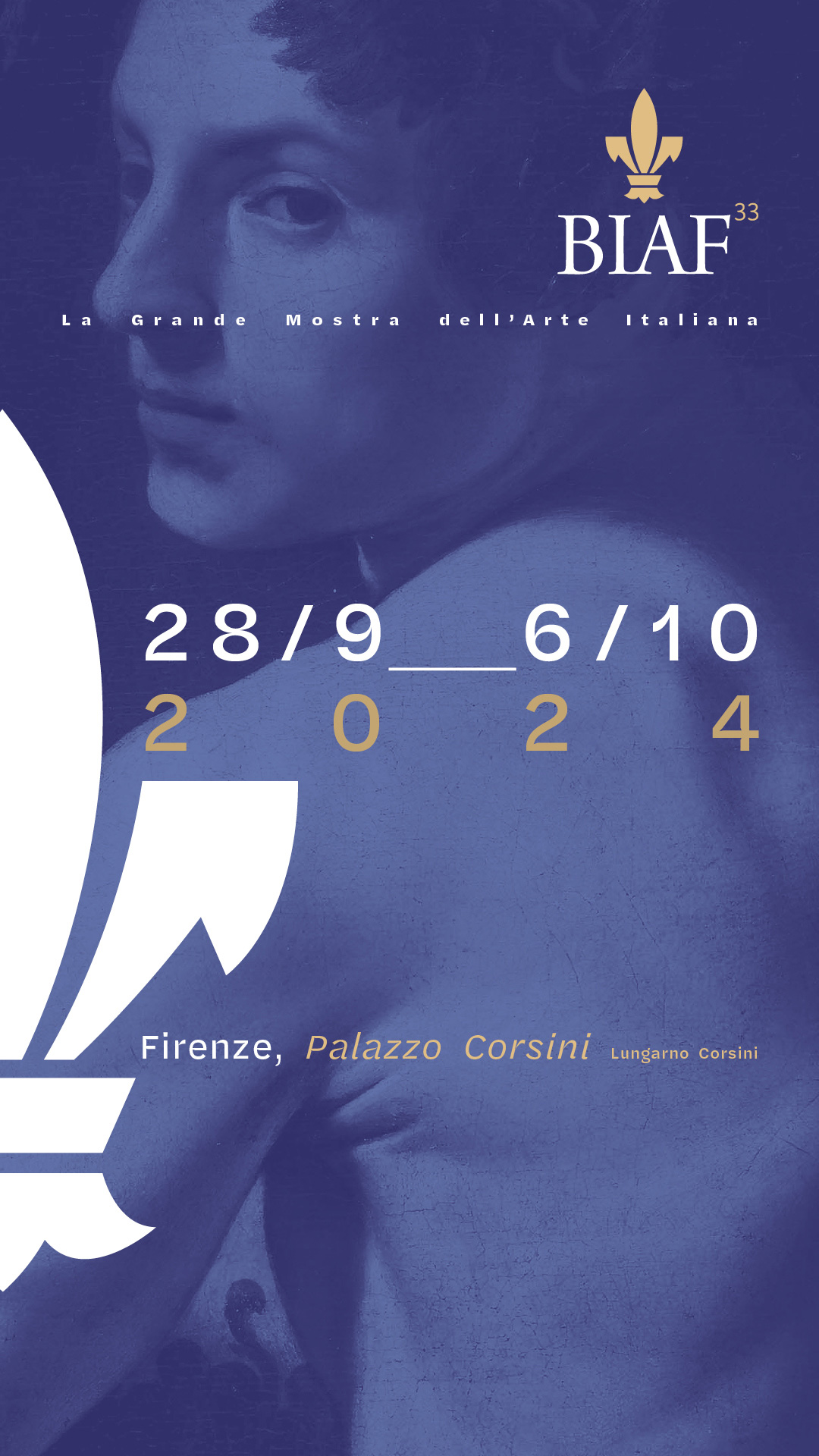

THE GREAT FAIR OF ITALIAN ART
FIRENZE PALAZZO CORSINI FROM 28. SEPTEMBER TO 6. OCTOBER 2024
XXXII BIAF, A MEMORABLE EDITION
The International Biennial of Antiques in Florence is confirmed as one of the most important events dedicated to Italian art on the international scene, with over 28,000 visitors for the XXXI edition and a rich cultural program that involves, also with the Florence Art Week, the entire city, fueling a huge induced activity which benefits many realities of the territory.
BIAF 2024
Con il Patrocinio di

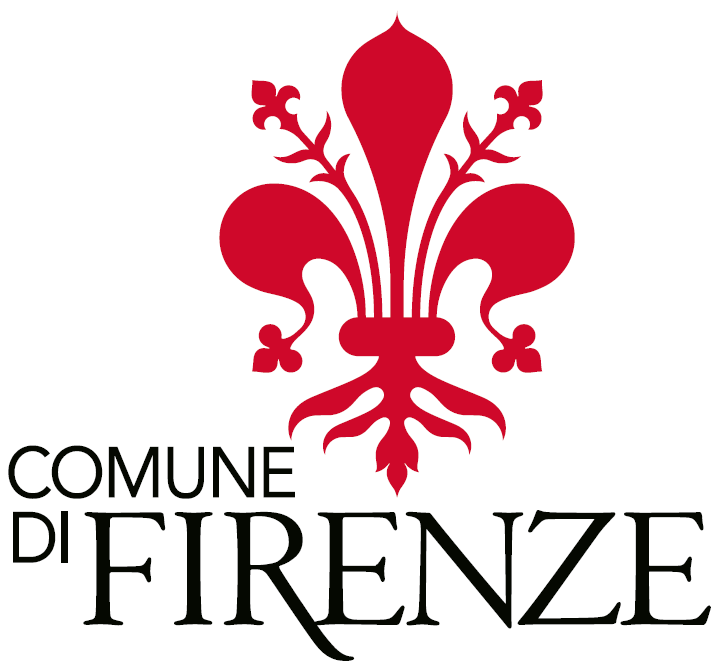
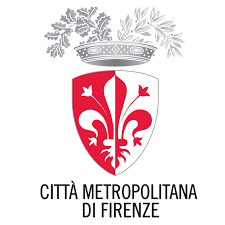
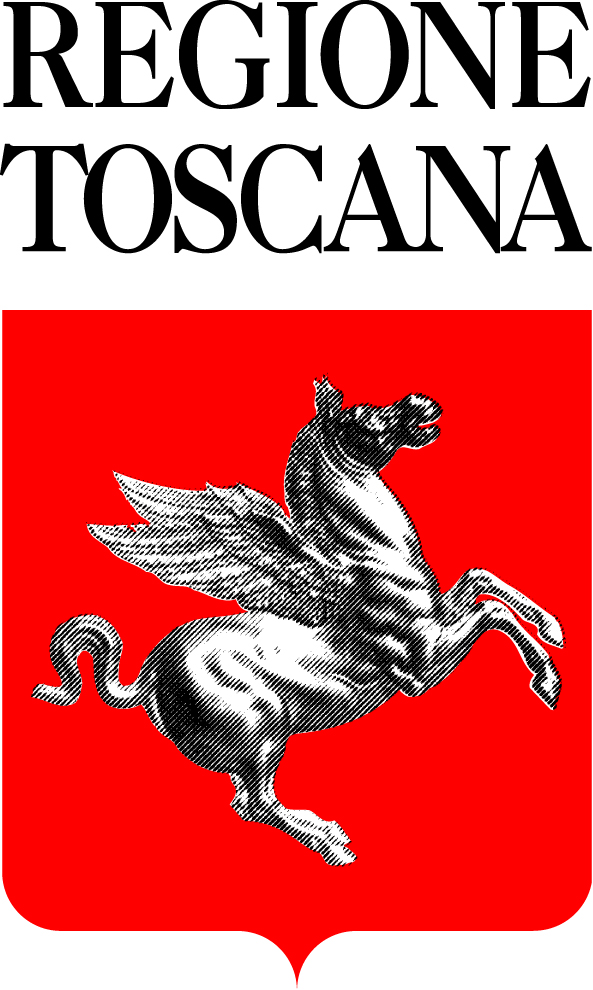

XXXII Edition
Palazzo Corsini Firenze
XXXII BIAF, A MEMORABLE EDITION
The International Biennial of Antiques in Florence is confirmed as one of the most important events dedicated to Italian art on the international scene, with over 28,000 visitors for the XXXI edition and a rich cultural program that involves, also with the Florence Art Week, the entire city, fueling a huge induced activity which benefits many realities of the territory.
Con il Patrocinio di





BIAF - THE GREAT FAIR OF ITALIAN ART


